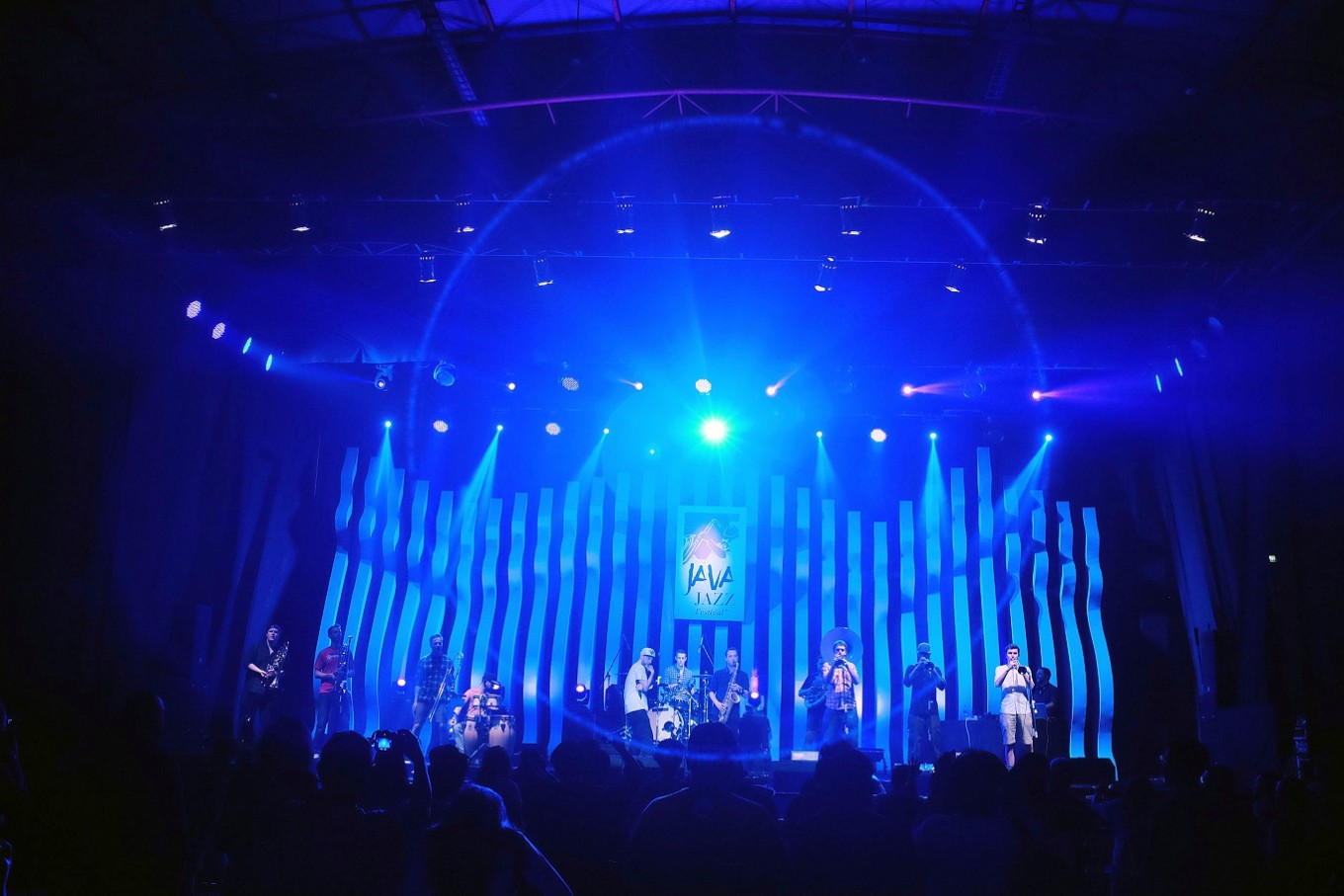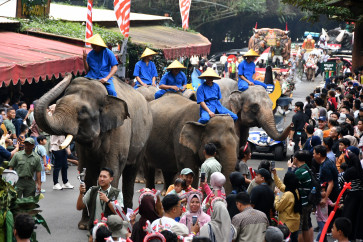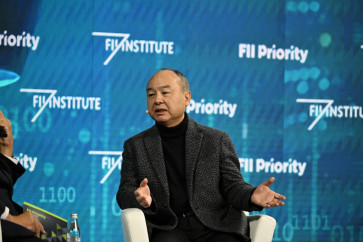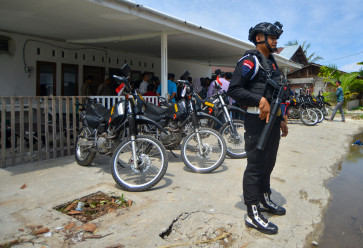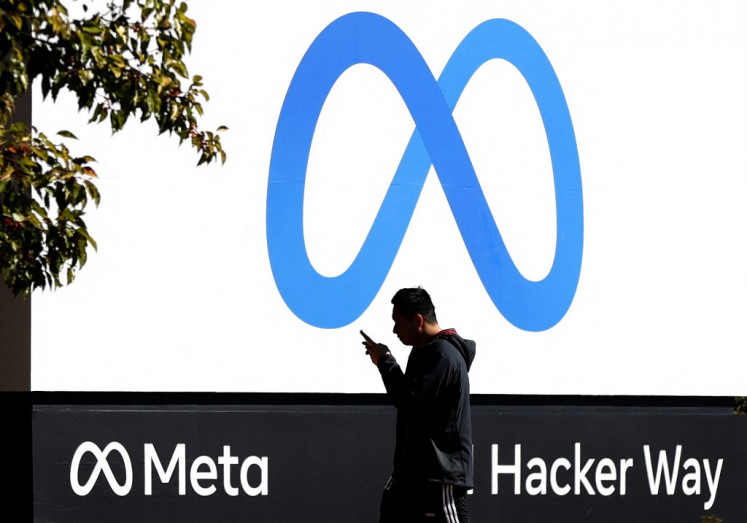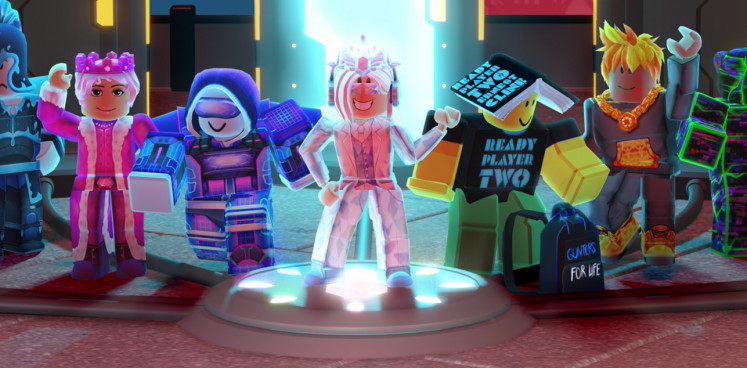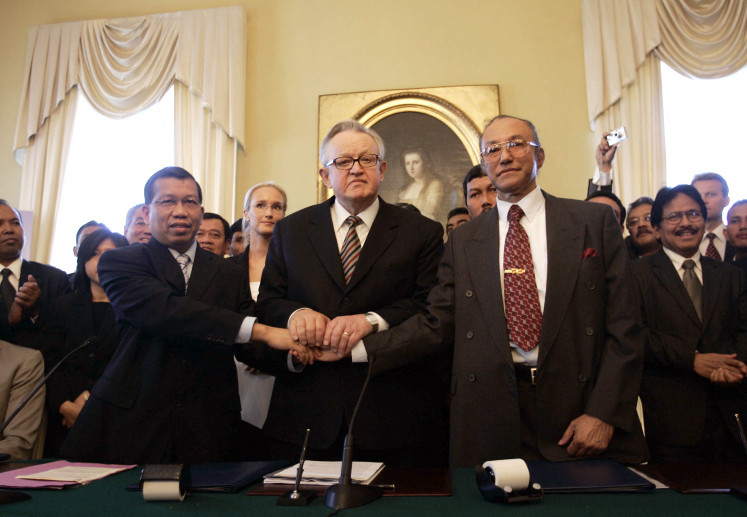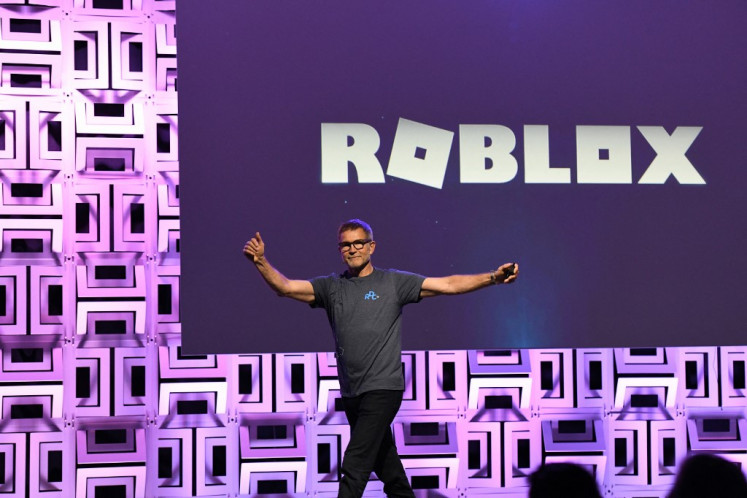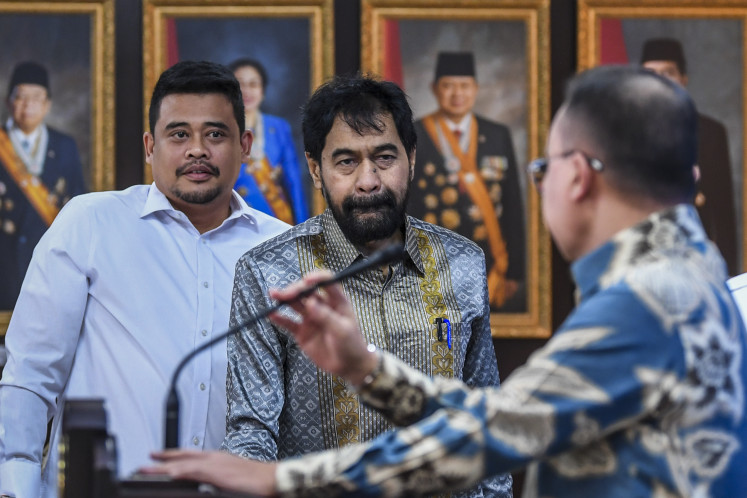Popular Reads
Top Results
Can't find what you're looking for?
View all search resultsPopular Reads
Top Results
Can't find what you're looking for?
View all search resultsJava Jazz 2017 gracing the past while embracing the future
The recent 2017 Jakarta International Java Jazz Festival returned to its jazz roots while at the same time embracing young millennials.
Change text size
Gift Premium Articles
to Anyone
For the last few years, the annual Jakarta International Java Jazz Festival might have seemed to have lost its identity.
Despite the name, the festival, for the last four or five years, has given more opportunities for pop artists and even electronic dance musicians to showcase their work, instead of only jazz artists. Last year, for example, pop artists such as Raisa, Afgan and Isyana Sarasvati performed their sets at BNI Hall, the most prestigious venue at JIExpo exhibition hall in Kemayoran, Central Jakarta, while jazz musicians such as Benny Mustafa and Syaharani were only given small stages.
This year, however, the festival seemed to return to its jazz roots. The prestigious BNI Hall was no longer dominated by pop artists during this year’s festival, which lasted for three days from March 3 to 5, and featured more jazz-oriented acts.
Read also: Seven forgotten jazz albums beyond the jazz standards
On the first day, BNI Hall featured Iceland jazz-funk fusion band Mezzoforte and Belgian musician Marie Daulne’s music act Zap Mama, which infused African vocal techniques, Urban, Hip-Hop and jazz with an emphasis on voice. British acid jazz band Incognito also graced the BNI Hall stage on the second day while Brazilian jazz musician Sergio Mendes performed his sets at the same vicinity on the final day after the performance of Grammy award-winning pop singer and producer Ne-Yo.
Jazz also dominated other halls and smaller stages throughout the festival. Hall D2 on Saturday, for example, mostly featured an all-jazz line up, with acts such as jazz trumpeter and musician Arturo Sandoval, Mendes and Chick Corea Elektic Band.
Although it returned to its roots, the festival did not forget to embrace millennials by introducing more digital-friendly facilities and interactive areas. Compared to previous years, this year’s festival provided more charging stations, which came with interactive selfie-taking monitors where festival-goers could easily take pictures of themselves before sharing them instantly on their social media accounts.
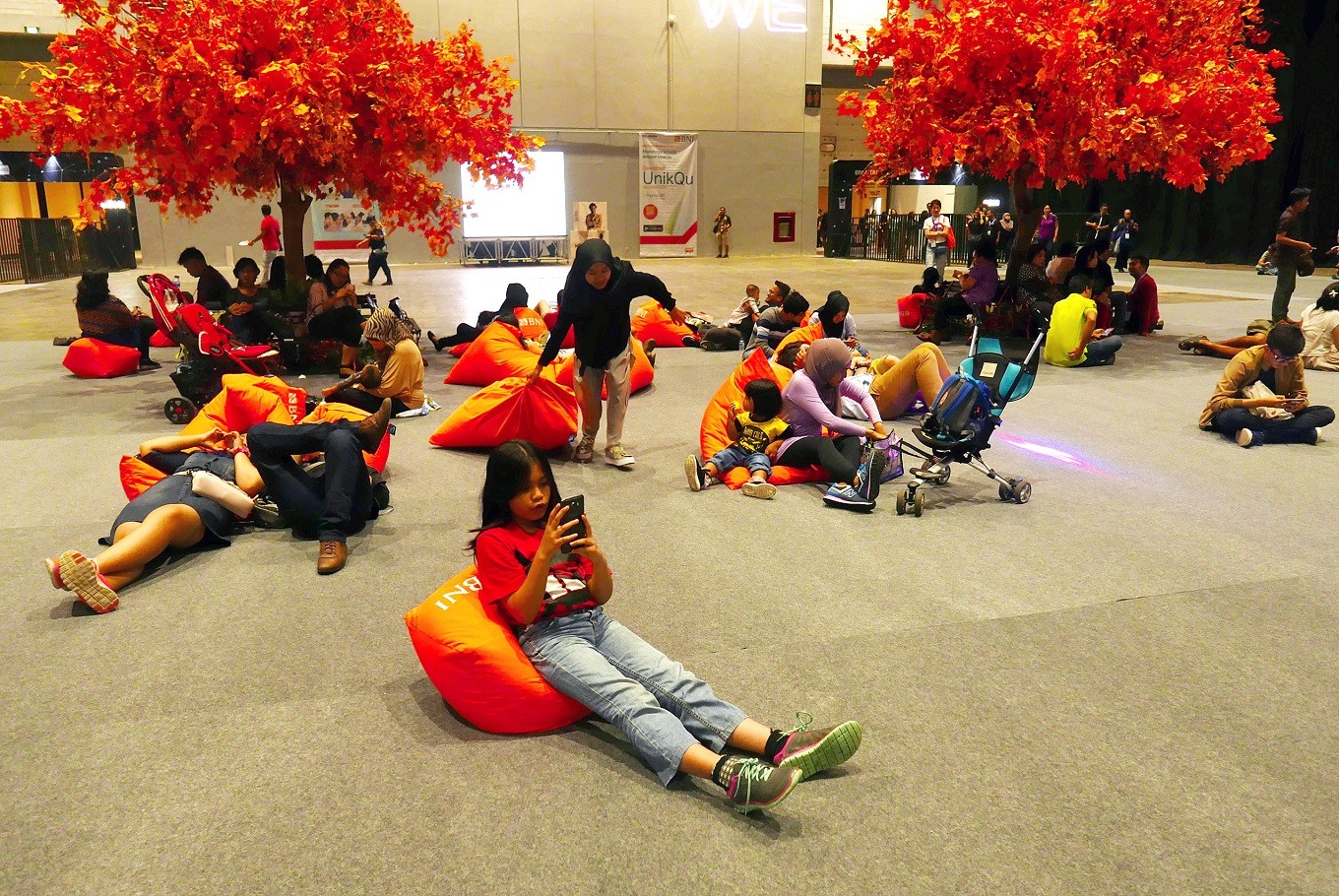 For your comfort: Visitors can also rest on bean bags provided by the organizer.(JP/Wienda Parwitasari)
For your comfort: Visitors can also rest on bean bags provided by the organizer.(JP/Wienda Parwitasari)
The organizer, in knowing that millennials could be demanding when it came to comfort, catered to their needs by providing bean bags in every hall, allowing visitors to rest up in between acts while charging up their smartphones.
Another highlight from this year’s festival was art installation “The Art and Sound Experience.” Constructed from red, wooden crates stacked upward to imitate the seating of an amphitheater and equipped with a mini coffee stall, a silvery statue of a flute player and a white octopus effigy across it, the installation was not to be missed by those looking to take photos worthy of Instagram.
A mural of world music legends and their inspirational quotes surrounded the installation, including on the foot of the stairs up to the top to where the main statue was. The sound of a flute would periodically come out from the statue and trigger the giant octopus, which was robotic, to move its tentacles.
More than just enjoying the artwork, visitors could become part of the art itself. While passing through a digital screen equipped with a sensor at the center of the installation, the visitor’s visual reflection would be transformed on-screen into digital art.
“The installation was easily our favorite place,” said Widya, a visitor. “My friends and I took a lot of pictures here,” she said.
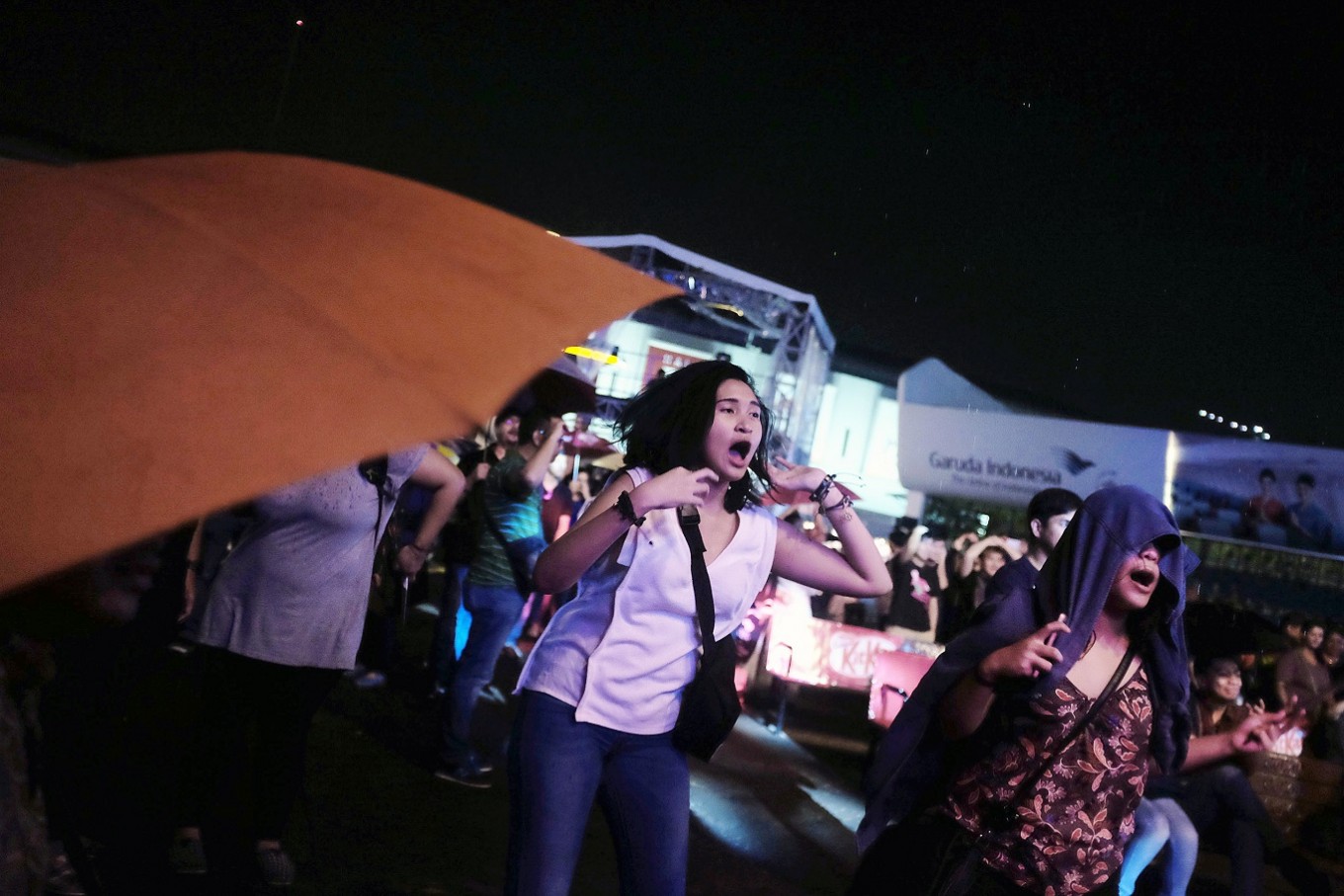 Thrilled: A visitor shows off her enthusiasm during a show at the Jakarta International Java Jazz Festival. This year, the organizers decided to return to the festival's jazz roots while at the same time embracing the millennial generation by introducing more digitally-friendly facilities.(JP/Jerry Adiguna)
Thrilled: A visitor shows off her enthusiasm during a show at the Jakarta International Java Jazz Festival. This year, the organizers decided to return to the festival's jazz roots while at the same time embracing the millennial generation by introducing more digitally-friendly facilities.(JP/Jerry Adiguna)
One of the festival’s performers, pop singer Tompi said he thought the organizer had done a great job in trying to make the festival return to its roots while at the same time continuously educating the younger generations and visitors about jazz without being too pretentiously pushy.
“Our society needs to be educated about jazz and that is what the organizer has been trying to do in the last few years,” Tompi said.
Read also: Tompi gets political at 2017 Java Jazz Festival
“Nobody can like jazz in an instant. So, in previous years, they might have invited more pop musicians so that people would come and slowly educate themselves about jazz. This year, I believe the organizers had done a lot more to educate visitors by introducing more movements into the festival,” he added.
Separately, Mendes said that while the festival had tried to return to its roots, he also stressed that it should never shy away from inviting other musicians from different genres because as a musician, he said he had always loved the mixture of sounds and genres.
“I think it gives the opportunity for people to listen to the diversity of music,” Mendes said.

